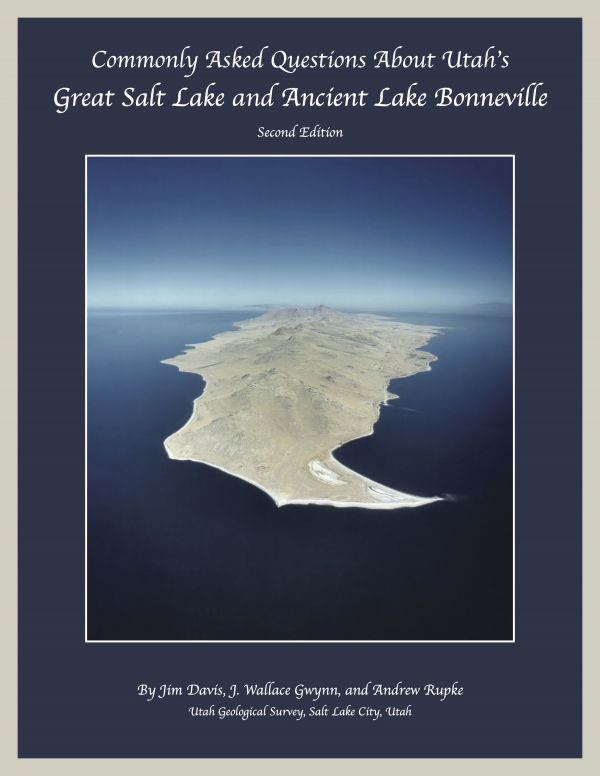Read the Second Edition of Commonly Asked Questions About Utah’s
Great Salt Lake and Ancient Lake Bonneville.
By Jim Davis, J. Wallace Gwynn, and Andrew Rupke
Utah Geological Survey, Salt Lake City, Utah
Published 2022
Preface to the Second Edition
This second edition of Commonly Asked Questions about Great Salt Lake and Ancient Lake Bonneville follows more than a quarter-century after the first edition. When the original was published in 1996, Great Salt Lake was at levels above the historical average. The disruptions and memories of the floods of the 1980s were fresh in people’s minds. Since then, much of the character of the lake has changed. In October 2021, the lake reached its lowest surface elevation since records began in 1847. This 2021 low level record was broken less than a year later in early July 2022. As the lake has contracted through the 21st century drought in the American Southwest, Great Salt Lake’s islands have connected to the mainland, bioherms—living rocks critical to the lake ecosystem—have become exposed and desiccated, marinas have been dredged and vacated, and extractive industries have had to move pumps. Hundreds of square miles of lakebed have been exposed to the atmosphere. The Spiral Jetty emerged as the lake receded, becoming a new state symbol. With lower lake levels a corresponding increase in the salinity of the water has turned the now saltsaturated north arm of the lake into a rosy-pink color. In the south arm a record harvest of brine shrimp cysts occurred in the 2019–20 season. Two culverts sinking into the lake floor since 1959 were replaced with a new breach towards the center of the rock-fill railroad causeway with a control berm, allowing enhanced and measured water exchange between the south arm and north arm. Millions of board-feet of salt-pickled wood from the original 1904 Lucin Cutoff trestle has been salvaged and repurposed for its fine timbers. The lake’s surrounding environs have changed, too. A million more people live in the lake’s basin. Visitation to the lake increases year after year. This second edition updates information on many of the answers to the commonly asked questions and presents a few new questions that were not pertinent to the lake decades ago but are asked today.

